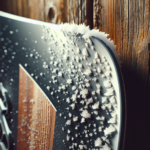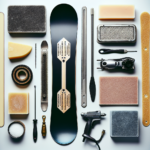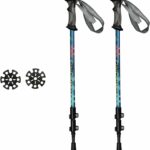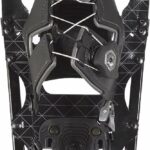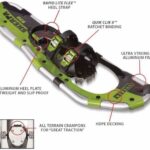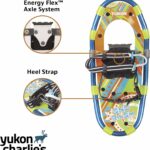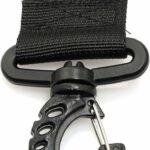Grab your gear and perk up your senses as we gear up for an engaging discussion about maintaining an essential part of your snowboarding kit. The focus here is on your snowboard edges and the frequency of their sharpening. Strap in as we glide through the critical aspects of edge maintenance, which not only influences your ride’s quality but also ensures your safety on the slopes. From professional snowboarders to hobbyists catching their thrill on the glaring snow, the continually asked query is: “how often should you sharpen your snowboard edges?” Get ready to find the answer.
Understanding the Importance of Sharp Edges
Sharpening your snowboard edges might not sound like big deal, but in reality, it has tremendous impact on your overall snowboarding experience. Let’s dive into understanding some critical factors.
Role of sharp edges in snowboarding
Sharp edges in your snowboards are like the tread on your car tires; they play a significant role in helping you maintain control and stability while snowboarding. Picture yourself carving through the snow and navigating sharp turns with complete control. Those thrilling moments are largely possible due to the sharp edges that provide the necessary traction on the slick surface.
How sharp edges affect maneuverability
Your ability to manipulate your board—known as maneuverability—hugely depends on your snowboard’s edges. Sharp edges “bite” into the snow on turns, helping the board to stick to its arranged track smoothly. Moreover, sharp edges also enable you to make accurate stops, offering you a more controlled and safer snowboarding experience.
Sharp edges and speed: The correlation
The relationship between sharp edges and speed isn’t immediately obvious, but it’s there and it’s essential. Sharp edges help control friction and traction, the two factors deciding your speed on the slope. With the right friction and adequate traction from sharp edges, you efficiently convert your momentum into speed, making sharper edges an integral part of speed snowboarding.
Factors That Influence the Frequency of Sharpening
Here’s the big question—is there an ideal frequency for sharpening your snowboard edges? The answer varies as it primarily relies on these three factors.
Frequency of use
The more frequently you use your snowboard, the quicker your edges will wear down. Therefore, avid snowboarders who are on their boards every possible day throughout the season may need to sharpen their edges more often than those who are hitting the slopes less frequently.
Type of snow conditions
The terrain and snow conditions you’re boarding on also affect how often you should sharpen your edges. Rough ice and hard-packed snow can quickly dull your board’s edges, while riding on softer or powdery snow is less impacting.
Riding style and preference
Are you a daredevil, constantly pushing boundaries and going for tough terrains and tricks, or do you prefer taking it easy and love gliding down gentle slopes? The former may require you to sharpen your edges more frequently, as vigorous styles can wear down the board more quickly.
How Often to Sharpen for Different Snow Conditions
Depending on the snow conditions, you should tune your sharpening frequency to optimise your performance on the specific terrain.
Sharpening for soft or new snow
As you’d expect, soft and new snow is less aggressive on your snowboard edges. Therefore, you don’t have to sharpen them as frequently—less frequent riding and the use of softer snow usually calls for once-a-season maintenance.
Sharpening for ice and hard-packed snow
However, if you’re frequently riding in icy or hard-packed snow conditions, you’ll likely need to sharpen your edges more often, probably after 3-5 days of continuous riding. These challenging conditions can quickly dull your edges and moreover, you need sharper edges to gain a better grip on hard snow surfaces.
Sharpening for mixed or variable conditions
Mixed conditions, unsurprisingly fall somewhere in between the two extremes and require a balanced approach to sharpening. If you ride concurrently on icy, hard-packed, soft, and powdery snow, consider sharpening your edges every several weeks or even more frequently if you notice performance dips.
Identifying When Your Snowboard Edges Need Sharpening
Just as you tune to your body’s signals to know when something’s amiss, you must tune to your snowboard’s cues to know when it needs some care.
Physical indicators of dull edges
Take some time to inspect your snowboard edges visually and physically. Look for any noticeable nicks, scratches, or rounded corners—these are all clear signs that your edges need sharpening.
Performance indicators of dull edges
While you’re on the slopes, you can feel the difference in your snowboard’s performance when its edges turn dull. Difficulty in making precise turns, the board slipping away in hard surfaces, or the loss of speed can all be indicators that your edges aren’t as sharp as needed.
Snowboard maintenance and inspection
Keep a close eye on your board’s overall condition after each use in perilous conditions. Frequent inspections will help you in the early spotting of any issues and avoid missing out on the optimal performance due to the lack of sharpness.
The Process of Sharpening Snowboard Edges
Sharpening your snowboard edges isn’t an overly intimidating feat, especially if you’ve got the right tools and clear steps to follow.
Tools required for sharpening
You’ll need a handful of tools: a high-quality edge tuner, file guide for setting edge bevel, diamond stones for polishing the edges, and a gummy stone for removing any rust or burrs.
Step by step guide to sharpen your snowboard edges
Once you’ve got the tools, follow this simple guide:
- Clean your snowboard and make sure it’s completely dry before you start.
- Using the file guide, set the base and side edge bevel.
- Begin with the diamond stone to remove any rust or burs from the edges.
- Follow with the tuner, making smooth, steady strokes along the edge from tip to tail.
- Polish the edges and remove any remaining burrs with the gummy stone.
- Inspect the edges again, and if any areas still seem dull, repeat the process.
Safety tips during sharpening
Always remember that you’re handling sharp tools and edges, so be careful! Wear protective gloves and goggles, do the sharpening in a well-lit area, and always keep the tools and your fingers moving in the same direction to avoid any accidents.
Professional vs Home Sharpening
When it comes to sharpening your snowboard edges, you’ve got two main options: doing it yourself at home or hiring a professional. Let’s see how each stacks up.
Pros and cons of professional sharpening
Getting professional help means you’ll likely have well-maintained edges without dealing with the hassle of doing it yourself. However, it also means you’ll be spending more and may need to adhere to shop hours—although the outcome should be consistently high-quality.
Pros and cons of home sharpening
Park the feeling of satisfaction from maintaining your own snowboard! If you’re willing to invest a little time and effort, you’ll not only save money but can get the sharpening done whenever you want. On the downside, it could take a few attempts to perfect your sharpening skills, and improper techniques might damage your board.
Making the decision: Professional or Home sharpening?
Your decision should follow a simple cost-benefit trade-off: weigh the value of your time, inclination for hands-on tasks, the quality of output, and budget. Some might appreciate the satisfaction of maintaining their own snowboard, while others may value convenience and assured quality more.
Tips to Extend the Lifespan of Your Snowboard Edges
Keeping your snowboard edges sharp has a two-fold benefit—it enhances your performance on the slope and also extends the lifespan of your board.
Regular maintenance tips
Stay on top of regular cleaning and waxing, as well as fixing any evident damage. Clean the top sheet after every ride to prevent any unwanted residue from seeping onto the edges and causing corrosion.
Smart snowboarding practices
Board carefully! Try not to ram your board into hard objects or jump unnecessarily. Hitting rocks, logs, or pavements can cause significant damage to your edges.
Proper storage and handling
When you’re not snowboarding, ensure you properly store your board. Keep it dry to reduce the risk of edges getting rusty; storing it upright or hanging will also help avoid accidental damages.
Common Mistakes in Sharpening Snowboard Edges
While sharpening your snowboard edges can be a rewarding DIY experience, it’s not without pitfalls. Be mindful of these common mistakes when sharpening your edges at home.
Over-sharpening
Over-sharpening is a common mistake that can wear the edges down unnecessarily. Exact frequency of sharpening will be unique for each rider, so tune into your board’s performance clues and don’t let the task of sharpening become a ritual after every ride, unless necessary.
Neglecting base edge bevel
Another mistake you want to circumvent is not setting the base edge bevel correctly. It can affect the overall board’s performance and make for an unstable ride. So, spend the extra time in setting up an appropriate edge bevel based on your riding style.
Not having the right tools
Employing wrong tools (or even worse, household items like kitchen knives) is an absolute no-go. Invest in good-quality, correct tools; this small initial investment will not only make your work easier but also help in maintaining your board’s longevity.
Frequently Asked Questions About Sharpening Snowboard Edges
Let’s address a few frequently asked questions about sharpening snowboard edges.
How long does sharpening take?
If you’re new to it, sharpening might take up to an hour. But with some practice, you should be able to get it down to around 15 minutes.
How to know if I’ve over-sharpened?
If your edges look thin, feel rough or razor sharp, or if your ride feels overly grippy or unsteady, you might have overdone the sharpening.
What angle should I sharpen at?
The angle varies based on your board style and personal preference. For most riders, setting a side edge bevel of about 90-88 degrees and a base edge bevel of 0.5-1 degree works well.
Conclusion: Finding Your Optimal Sharpening Routine
Balancing frequency and snowboard performance
Finding the right balance for sharpening your snowboard edges is an important factor in your overall snowboarding experience. Paying close attention to the performance of your snowboard on the slopes should help you get a sense of when your edges could use a sharpen. Remember, a well-maintained snowboard will allow for a smooth, controlled, and enjoyable ride.
Tailoring the routine to your snowboarding style and conditions
Your perfect sharpening schedule might differ from your friend’s. It’s essential to develop a routine that suits your unique riding style, frequency and the snow conditions you typically board in. Tune in to how your board feels during rides to understand its needs better.
Critical reminders about sharpening your snowboard edges
Sharpening your snowboard edges is just one part of snowboard maintenance. It’s a simple action that can enhance your ride’s quality and extend the useful life of your snowboard. Remember to follow the correct sharpening steps and always use the right tools. It’s okay to seek professional help if you’re unsure about doing it yourself; after all, having sharp edges is a crucial aspect of snowboarding. So, go on, get those edges sharp, and enjoy the thrill of your next ride!
- What Snowboard Bindings Should I Get? - January 23, 2024
- What Size Screws For Snowboard Bindings? - January 23, 2024
- How To Snowmobile On Water? - January 23, 2024



